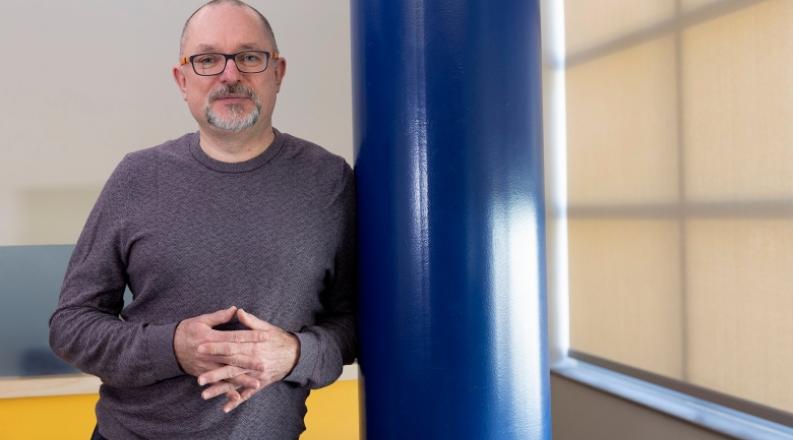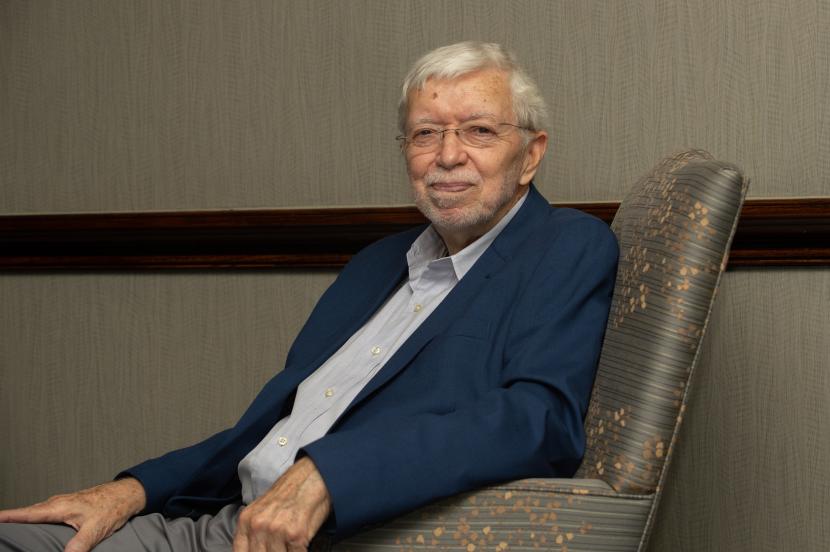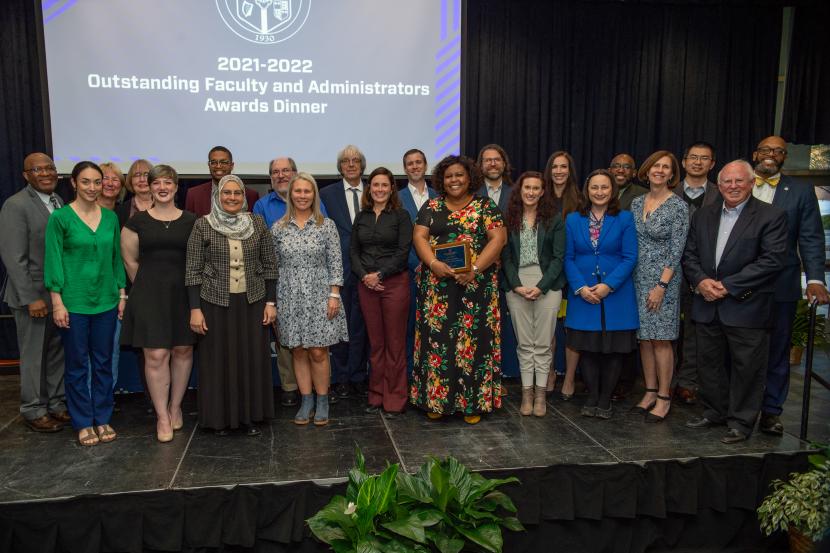As a young man, Willy Wriggers was fascinated by optical instruments.
Childhood gifts of a microscope and a telescope led to a love of science, especially astronomy and biology.
"I started studying water in dirt puddles outside and was interested in bacteria and also looking at the stars," he said. "I learned all the star constellations when I was 8 or 9."
In high school, Wriggers was active in his high school's astronomy club, edited the club's magazine, "Rosa Ursina," and led tours and presentations on the cosmos.
"That experience became sort of a blueprint for what I did later as a scientist and educator," he said.
Today, his focus is on life at a molecular level.
Wriggers, the Frank Batten Chair of Mechanical Aerospace Engineering and Bioengineering at Old Dominion University, develops 3D computer modeling techniques to help scientists refine and reconstruct electron microscopy (EM) images.
Wriggers has collaborated with Jing He, a professor in ODU's Department of Computer Science, since 2015. His contribution is the application and understanding of deep learning in the computational environment.
The work will "help biological electron microscopists bridge a broad range of resolution levels from atomic to living organism-level," Wriggers said.
Those images can help scientists explain biomolecular structures - complex assemblies made up of nucleic acids and proteins.
"Trying to understand these structures at the atomic detail helps you understand the function of the biological machine - you understand how muscle works at the atomic level, you know how the metabolism of ATP (adenosine triphosphate, the "fuel" of all living things) drives complex cellular processes," Wriggers explained in a recent interview. "How that is actually done with proteins is really fascinating."
Wriggers and He specialize in modeling actin filaments - a fibrous, gel-like material inside a cell or inside muscle that is responsible for cell movements and muscle contraction.
"We are one of only five or six researchers in the world doing this kind of work," he said.
Electron microscopy utilizes a beam of accelerated electrons to view molecular structures - something not possible with a traditional light microscope.
However, in order not to destroy the sample, the electron dose must be very low. This results in a low-resolution image lacking complete detail.
Before computer modeling, scientists would superimpose a model of the complete structure on the EM image by hand - a process that was time-consuming and not reproducible.
Twenty-five years ago - as advances in computing were just beginning - Wriggers saw a potential solution. "I thought to myself, 'Why isn't anyone trying to use computers to do this automatically?'"
In response, Wriggers developed Situs, a software package that could dock the low-resolution EM images to computer-generated 3D models. The program helped fill in missing artifacts caused by deficiencies in electron microscopes and to refine what Wriggers calls "noisy" imaging.
"It put me on the map almost 25 years ago, and essentially drove my entire academic career," he said.
An Introduction to Computers
Wriggers' grew up in Ingolstadt, Germany, headquarters of the Audi car company.
His father and grandfather both worked there, and Wriggers, like many teenagers, worked there in the summers.
That experience would lead to a lifelong love for cars and machinery.
In college, Wriggers gravitated toward physics and emerging computer technologies.
"People were just starting with computers, and I realized that computers could play a big role in physics," he said.
In 1992, he left Germany for a yearlong exchange program at the University of Illinois at Urbana-Champaign."The reason why I'm still here is because I didn't exchange back," he said with a laugh.
For Wriggers, it was an exciting time to be at Illinois. The physics department was just one floor down from the research and development arm of the National Center for Supercomputing Applications (NCSA) and they were in the process of developing Mosaic, the first commercially available internet browser, and the CAVE, a virtual-reality environment.
"It was really like the center of the universe to be at the Beckman Institute during that time," he said.
Wriggers was one of the first researchers to implement virtual reality for 3D biological structures. It was innovative research for someone whose first experience with a computer was at age 21.
His dissertation focused on the first simulation of newly discovered motor proteins. It was all based on application - other people wrote the software - something Wriggers would eventually do as well.
Wriggers developed Situs as a post-doctoral student at University of California, San Diego and then as an assistant professor at The Scripps Research Institute on the same campus.
Finding a Home at ODU
When he was 32, he received a $1.2 million National Institute of Health grant. The funding has ensured that Wriggers' work would continue - from California to the University of Texas Health Science Center at Houston, the Weill Medical College of Cornell University and now at ODU. The grant has been renewed continuously since 2001.
"Wriggers' work is a model of the quality of research that weaves engineering and medicine here at Old Dominion University and at the College of Engineering," said Khan Iftekharuddin, interim dean of the Batten College of Engineering and Technology. "We value his contributions as a researcher, professor and friend."
Wriggers left academia for a few years to participate in the development of the Anton supercomputer at D.E. Shaw Research in New York City. The privately funded team achieved the first millisecond-length molecular dynamics simulation in 2010, which was a major breakthrough in biomolecular modeling.
Later, when he was looking for a university to renew his own NIH-funded project and lab, biomachina.org, life led him to ODU.
"When I got this offer, I thought, 'Wow, they really believe in me,'" he said. "I'm really super grateful to ODU for enabling me to continue my independent research."
Wriggers also welcomed the multidisciplinary opportunities at ODU - including the opportunity to work with ODU Motorsports.
"I used to ride a motorcycle. I used to fly glider planes," he said. "I liked everything that moved."
"Coming here and seeing that there was an active motorsports lab in this building," he said, "I was really fascinated by that."
As an adviser, Wriggers worked with the students to install sensors on the cars and measure the vehicle's parameters and dynamics. "We used that to improve lap times and better understand the performance of the vehicles," he said.
For Wriggers' next project, the sky's the limit.
"I hope to find time to go back to an aerospace or optical astronomy project where I can apply our computational tools," he said. "I think that would be really exciting.
"One of the great benefits of ODU is that there are no limits here in terms of what I can do."
Away from Campus
Wriggers lives at Chic's Beach in Virginia Beach with his wife Hilary and two sons. The family plays various instruments. In his free time, you may find Wriggers and his sons performing at open mics and on the local blues jam circuit at venues like Froggies or Jerry's Indian River.
Related News Stories
Q&A: Holly Gaff Shares Myths and Tips Surrounding Ticks
A professor in the Biological Sciences Department at ODU, Gaff offered insight on staying safe, diagnosing tick-borne diseases and the impact climate change is having on tick populations. (More)
Research Defines Wayne Talley’s 50-Year Career at ODU
The Strome College of Business professor was among those recognized at the Faculty and Administrative Service Recognition Luncheon. (More)
ODU Recognizes Outstanding Faculty, Administrators at Awards Dinner
Peter Schulman, who was named an Eminent Scholar, and Helen Crompton, who won the A. Rufus Tonelson Award, were among the honorees. (More)






